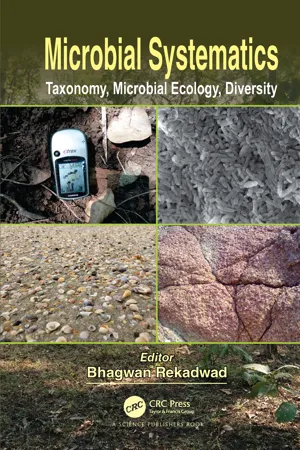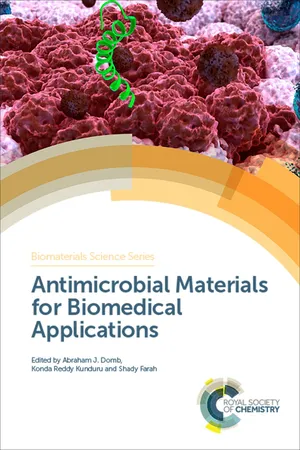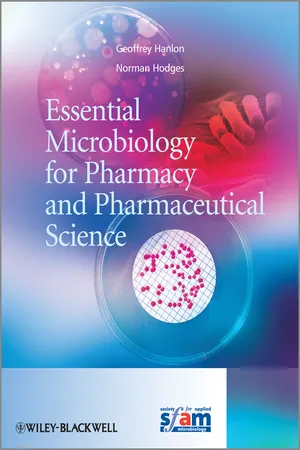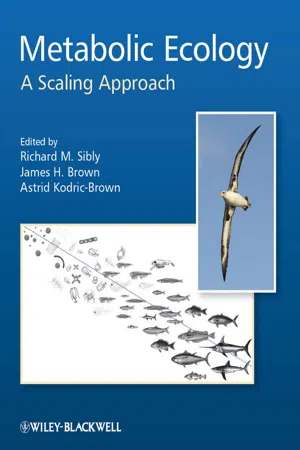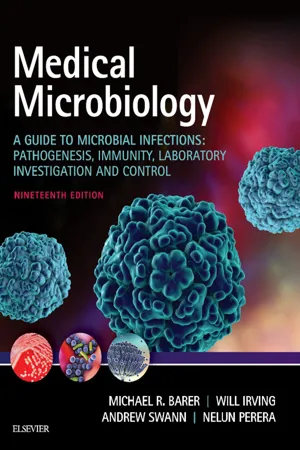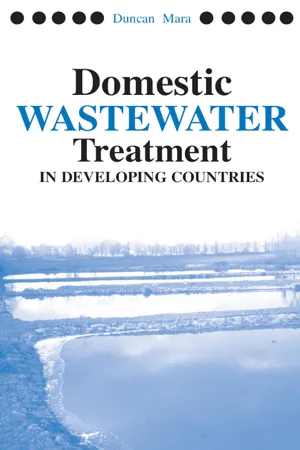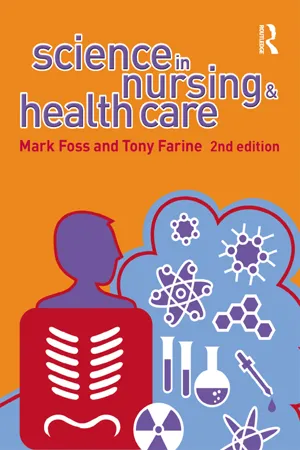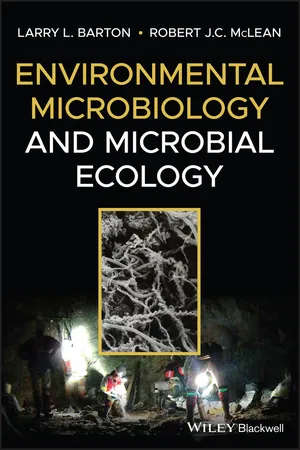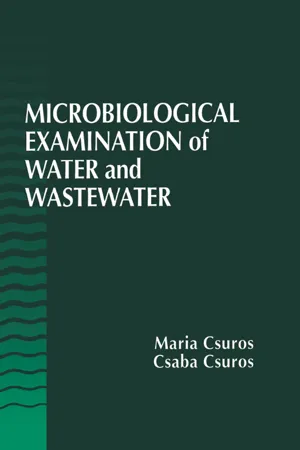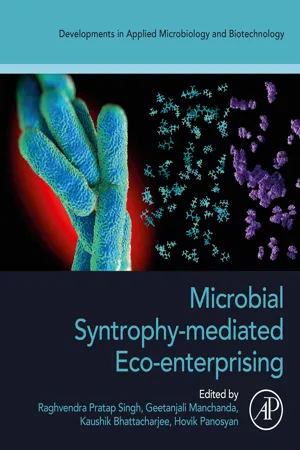Biological Sciences
Microorganisms
Microorganisms are tiny living organisms that can only be seen with a microscope. They include bacteria, viruses, fungi, and protists. Microorganisms play crucial roles in various biological processes, such as nutrient cycling, decomposition, and symbiotic relationships with other organisms. They can also be both beneficial and harmful to human health and the environment.
Written by Perlego with AI-assistance
Related key terms
12 Key excerpts on "Microorganisms"
- eBook - ePub
Microbial Systematics
Taxonomy, Microbial Ecology, Diversity
- Bhagwan Rekadwad, Bhagwan Rekadwad(Authors)
- 2020(Publication Date)
- CRC Press(Publisher)
HAPTER 3Application of Microorganisms
Govindan Rajivgandhi1 and Wen-Jun Li1 ,2 ,*ABSTRACT
Microorganisms are present in entire biosphere. Approximately, ten million microbes in every drop of water covering genetically diverse bacteria, fungi, archaea, algae and protozoa, as well as viruses. The very tiny round structure shaped microbes are designed as a microorganism. It can either be single cellular or multicellular. It can be grow from desert to muddy lands and others are grow exist freely. Among these, virus is different, it can be grow only on inside of the host cells, which called as obligate intracellular parasite. They are the key components in food, medicine, agriculture and other areas. Every year, all the researchers are detecting new genera and species of Microorganisms to be applied in medical, pharmaceutical, food industry, agricultural industry and various other environmental research. In our lives, microbes are contributed major role and are beneficial to us in many ways. Based on the beneficial effects, the important uses of microbes in various field including agricultural, food and dairy, pharmaceutical, medical, alcoholic beverages, enzyme technology, steroids and others was studied in this research.Introduction
Microorganisms are very tiny sized organisms that live everywhere and cannot be seen through naked eyes (Koehler et al. 2019). They are present in very large numbers in the entire biosphere (Kallscheuer et al. 2019). Hypothetically, life is evolved from microbes (Dapurkar et al. 2017). So, microbes are simply called the chest of the world (Pessoa et al. 2019). The human body is also made up of 100 times more microbes than human cells. The live form survival is most competitive due to various environmental factors like stress, pH, temperature, nutrient depletion and various minerals (Li et al. 2019). There are approximately ten million microbes in every drop of water including genetically diverse bacteria, fungi, archaea, algae and protozoa, as well as viruses (Yang et al. 2008). In microscope, the Microorganisms exhibit tiny rounded structures. These tiny creatures are called as a microorganism. - Abraham J Domb, Konda Reddy Kunduru, Shady Farah, Abraham J Domb, Konda Reddy Kunduru, Shady Farah(Authors)
- 2019(Publication Date)
- Royal Society of Chemistry(Publisher)
CHAPTER 2 Introduction to Microbes and Infection in the Modern World JOSHUA C. DOLOFF a, b a Department of Biomedical Engineering, Translational Tissue Engineering Center, Wilmer Eye Institute/Smith Bldg, Johns Hopkins University School of Medicine, 400 N. Broadway, Baltimore, MD 21231, USA b Department of Materials Science and Engineering, Institute of NanoBioTechnology, Johns Hopkins University3400 N. Charles StBaltimoreMD 21218USA Email: [email protected] 2.1 Introduction 2.1.1 The Many Facets of Microbial Life Beyond much larger multi-cellular plants and animal species, microbes are largely, but not always, single cell Microorganisms that help make up many of the remaining major constituents of the natural ecosystem. 1 They exist everywhere, both in the outside environment in soil, water and air, as well as on and inside of other larger living organisms, including plants and animals. They demonstrate remarkable ability to survive under extreme conditions, including high and low pH and temperature, even those considered unlivable (e.g., boiling, freezing, highly acidic) for many other forms of life. They are quite diverse, being striated into bacteria, protists—including protozoa (free or parasitic), algae, and fungi (including yeast and mold)—viruses, and viroids, as well as prions, known for being protein-based infectious agents (Figure 2.1). Despite the name, which implies that they exist at the micron level, as is the case with unicellular protozoa or bacteria, their scaling can be lower, into the nano, and higher, into the macro ranges, as is the case with subcellular prions and viruses or multi-cellular algae and fungi, respectively. As a consequence, microbes are generally thought of existing at a scale that requires a microscope to properly visualize them as well as their structural complexity- Geoff Hanlon, Norman A. Hodges(Authors)
- 2012(Publication Date)
- Wiley-Blackwell(Publisher)
Part I Characteristics of MicroorganismsPassage contains an image Chapter 1 The Microbial World
A mixture of bacteria, protozoa and algae in a water sample from a streamKey Facts- Microorganisms are all around us in enormous numbers and are present both on and within our bodies. Some, termed pathogens, cause disease; others are beneficial and are of commercial importance but the vast majority are harmless.
- Infectious diseases can be caused by agents which are not living Microorganisms: prions are simply ‘rogue’ protein molecules, and viruses usually consist of nucleic acid and protein but have no cellular structure.
- Bacteria represent the simplest living cells. Most of those of pharmaceutical interest can be grown easily in the lab.
- Fungi and protozoa are more complex than bacteria and most of them can exhibit sexual reproduction.
- Relatively few fungi are pathogenic; most are important as contaminants and spoilage organisms in manufactured medicines.
- Protozoa are only of pharmaceutical interest as pathogens; they are not spoilage organisms.
1.1 Microorganisms Around Us
Microorganisms are present in almost every location and environment on earth. They are in the air, soil and water, on all plants and animals and in such extreme environments as Antarctic ice and rocks 3 km below the earth's surface where the temperature is 60° C or more. Besides growing at extremes of temperature and pH, many bacteria survive and grow in the absence of oxygen; for these bacteria, described as anaerobes, oxygen is toxic. Microorganisms are present, too, in huge numbers and variety. The bacteria in the average human gut are estimated to comprise about 500 different species, and their total number, approximately 1014- eBook - ePub
Metabolic Ecology
A Scaling Approach
- Richard M. Sibly, James H. Brown, Astrid Kodric-Brown, Richard M. Sibly, James H. Brown, Astrid Kodric-Brown(Authors)
- 2012(Publication Date)
- Wiley-Blackwell(Publisher)
In several respects, however, Microorganisms harbor the greatest biological diversity – in biochemistry, in phylogeny, in habitat, in metabolic lifestyle, in resource use, and in range of body size. Thus the greatest challenges and most promising advances for ecological theory arguably lie in its applications and extensions to understanding the ecology of bacteria, archaea, and microbial eukaryotes. Microbes exhibit an astounding range of values along multiple dimensions of diversity, and this documented variety continues to increase as we look more carefully at the microbial world (e.g., Brock et al. 2011). The size of their cells spans 16 orders of magnitude (a factor of ten quadrillion or 10 000 000 000 000 000), from the tiniest bacteria weighing ∼10 −15 g to the largest unicellular protists weighing ∼1 g (Table 12.2). Collectively these tiny organisms harness a huge diversity of metabolic pathways, substrates, and lifestyles that use dozens of different elements as energy sources. They maintain physiological activity across the widest range in temperatures (from −40 to 122 °C), pressures, salinity, and pH, and inhabit nearly every location in the Earth’s crust where free energy is available, rocks up to kilometers deep underground and microscopic liquid veins kilometers deep in Antarctic glacial ice (Morita 1980; Rothschild and Mancinelli 2001; Price and Sowers 2004). Microorganisms organize themselves across multiple levels of organization – growing as single reclusive cells, multi-species social consortia, multicellular organisms, and members of multi-domain superorganisms. This biodiversity is hardly surprising given that prokaryotes and unicellular eukaryotes occupy a minimum of two-thirds of the tree of life – at least 50 different phyla - eBook - ePub
Medical Microbiology E-Book
A Guide to Microbial Infections
- Michael R. Barer, Will L Irving, Michael R. Barer, Will L Irving(Authors)
- 2018(Publication Date)
- Elsevier(Publisher)
Here, we are concerned with the tiny fraction of Microorganisms that form associations with human beings and these encompass the cellular entities, bacteria, archaea, fungi and protozoa, and the subcellular entities, viruses, viroids and prions. Whether the last three can be considered organisms or even living entities is a matter for debate. Nonetheless, their transmissible nature, the immune responses they provoke and our inability to detect them with the naked eye place them firmly within the province of medical microbiology. The first two of these criteria also require us to consider some multicellular macroscopically visible organisms (members of the helminths) as agents of infection (see Ch. 60). Most of this chapter is concerned with bacteria. The subcellular entities are introduced briefly and the remaining medically significant groups are considered in more specialised chapters. Medical microbiology has been founded on recognising Microorganisms that are associated with human disease. This recognition has relied predominantly on two techniques: • microscopy • propagation in laboratory cultures Over the last quarter of the 20th century, it became possible to detect, describe and differentiate Microorganisms by biochemical and genetic methods, and this had two profound effects on microbiology. First, due largely to the work of Carl Woese (see Ch. 1), it is now possible to make a reasonable assessment of the evolutionary relationships between Microorganisms, a task that previously could be achieved for macroorganisms only by examining fossil records (Microorganisms have not left interpretable fossils). Woese's approach led to the recognition of an entire ‘new’ domain (a group ranking above kingdom level) of cellular organisms, the Archaea and a fundamental review of how we classify all of life - Duncan Mara(Author)
- 2013(Publication Date)
- Routledge(Publisher)
3
Essential Microbiology and Biology
INTRODUCTION
Wastewater treatment and re-use engineers need a good understanding of wastewater microbiology for two reasons: first because wastewaters contain micro-organisms that cause human disease (Chapter 2 ), and secondly because most wastewater treatment processes are microbiological (we generally use the term ‘biological wastewater treatment’ to reflect this, but we should say ‘microbiological wastewater treatment’). Wastewater treatment engineers also need to understand the effect of untreated, partially treated and fully treated wastewaters on the biology – really, the aquatic ecology – of the receiving watercourse.This chapter provides an introduction to the important groups of Microorganisms in wastewater treatment and reuse: viruses, bacteria, algae, protozoa and helminths (more detailed information is given in, for example, Mara and Horan, 2003). It concludes with a brief description of a simplified technique for the biological assessment of tropical freshwater quality using aquatic micro-invertebrates.What are micro-organisms?
Micro-organisms (often simply called ‘microbes’) are small single-celled organisms: viruses, bacteria, micro-algae and protozoa. To see them we need to use a microscope. (Helminths are multicellular animals and therefore not microbes, but we include them in the general topic of tropical sanitary microbiology, although this should be more properly described as tropical sanitary microbiology and parasitology.)Micro-organisms are the ancestors of all organisms that exist (or have existed) on Earth, and they are the most numerous of all organisms: a handful of soil contains many hundreds of billions of microbes, mostly bacteria – more than the world's stock of plants and animals (‘macro-organisms’). Microorganisms are relatively simple life forms, but it is a mistake to think of them as ‘primitive’ – they are complex biochemical ‘machines’ which serve us well (they are the prime movers in the biogeochemical cycles of oxygen, carbon and nitrogen, for example, without which no life would exist), but which can also serve us badly (the Spanish influenza pandemic of 1918–1919, for example, killed ~40 million people; Brainerd and Siegler, 2003*- eBook - ePub
Environmental Engineering
Basic Principles
- Vesna Tomašić, Bruno Zelić, Vesna Tomašić, Bruno Zelić(Authors)
- 2018(Publication Date)
- De Gruyter(Publisher)
Felicita Briški and Marija Vuković Domanovac
4 Environmental microbiology
This article has previously been published in the journal Physical Sciences Reviews. Please cite as: Briški, F., Vuković Domanovac, M. Environmental Microbiology. Physical Sciences Reviews [Online]Abstract: For most people, Microorganisms are out of sight and therefore out of mind but they are large, extremely diverse group of organisms, they are everywhere and are the dominant form of life on planet Earth. Almost every surface is colonized by Microorganisms, including our skin; however most of them are harmless to humans. Some Microorganisms can live in boiling hot springs, whereas others form microbial communities in frozen sea ice. Among their many roles, Microorganisms are necessary for biogeochemical cycling, soil fertility, decomposition of dead plants and animals and biodegradation of many complex organic compounds present in the environment. Environmental microbiology is concerned with the study of Microorganisms in the soil, water and air and their application in bioremediation to reduce environmental pollution through the biological degradation of pollutants into nontoxic or less toxic substances. Field of environmental microbiology also covers the topics such as microbially induced biocorrosion, biodeterioration of constructing materials and microbiological quality of outdoor and indoor air.Keywords: Microorganisms, environment, indicator Microorganisms, biodegradation, bioremediationGentlemen, it is the microbes who will have the last word .(Louis Pasteur)4.1 Evolution of Microorganisms
Earth is about 4.5 billion years old and scientists estimate that life first emerged at least 3.8 billion years ago after the surface of crust had cooled enough to allow liquid water to form. Early Earth was inhospitable from time to time because space rocks crushed into the Earth’s surface. Some impacts were powerful enough to vaporize oceans and create clouds of steam which sterilized the Earth’s surface. Nonetheless, some Microorganisms were able to survive this period deep underground while some may have had the capacity of modern microorganism to produce survival forms called endospores. Early in the planet’s history conditions were harsh. The Earth’s surface was exposed to strong ultraviolet (UV) radiation because the ozone layer was not yet formed in the atmosphere. Nevertheless, the prokaryotic Microorganisms began to develop. The first prokaryotic Microorganisms lived in anaerobic environment because atmosphere was a mixture of CO2 , N2 , and H2 O vapour and in traces H2 . O2 gas began to appear in significant amount in the Earth’s atmosphere between 2.5 and 2 billion years ago as a result of microbial metabolic process called oxygenic photosynthesis. Oxygenic photosynthesis which started around 3 billion years ago differed from earlier forms of photosynthesis and the bacteria responsible for this type of photosynthesis are called cyanobacteria . Cyanobacteria brought the O2 level of the Earth’s atmosphere up to 10% of today’s level and due to it the formation of ozone layer started. O2 level was high enough to enable evolution of oxygen-utilizing organisms [1 , 2 ]. An approximate timeline of the development of life on Earth is presented in Figure 4.1 . Since many eukaryotes are O2 - eBook - ePub
- Tony Farine, Mark A. Foss(Authors)
- 2013(Publication Date)
- Routledge(Publisher)
cystitis (infection of the bladder), or following ineffective handwashing it may be transferred to a wound or to food.So are all pathogens equally capable of causing disease?No – the ability of a pathogen to cause disease depends upon its virulence . Virulence varies between species and even between strains of the same species.The response to infectionIn-text review Microbiology is the study of organisms that are not visible to the naked eye (Microorganisms).Life on earth is divided into five kingdoms: animals, plants, fungi, monera and protista.Organisms are named using binomial nomenclature – so called since two names are used to identify each organism.Animal cells are characterised by a eukaryotic cell structure whilst Microorganisms may be prokaryotic or eukaryotic.Four types of microorganism are important in disease: bacteria, viruses, fungi and protozoa. Bacteria are identified on the basis of their appearance, staining reactions, metabolism and ability to form spores.The term ‘symbiosis’ refers to the close living association of two different species of organism.In commensalism, one species benefits from the association while the other neither benefits nor is harmed, e.g. the normal skin flora.In parasitism, one organism benefits from the association but the other is harmed. When the parasite is a microorganism, it is described as a pathogen and the harm done to the host is a disease.Immunity is the body’s ability to resist infectious disease; the system that controls immunity is called the immune system - eBook - ePub
- Larry L. Barton, Robert J. C. McLean(Authors)
- 2019(Publication Date)
- Wiley-Blackwell(Publisher)
2 Microbes in the Biosphere : Examination, Cultivation, and Communities2.1 Overview and Focus
The biosphere is defined as the region on Earth wherein one might find life. More accurately, it defines the region wherein Microorganisms are able to live, which is exceedingly broad because bacteria and archaea can survive in extreme environments that are inhospitable to other forms of life. One of the first experiments that many microbiology students perform is to expose agar plates to several environments within and in the vicinity of their laboratory. Through this exercise, we find Microorganisms are present in the air, on inanimate objects such as shoes and door handles, water, and on our skin. Based on the diverse appearance of Microorganisms (colony morphology) on Petri dishes, we see that there are many different types of Microorganisms in a given environment. When microscopy is used to observe Microorganisms growing in nature, bacteria are typically seen growing as surface‐adherent communities (referred to as biofilms). When growth conditions are manipulated either naturally or in the laboratory, differences may be seen in the composition of microbial populations or alterations in growth, gene expression, and metabolic characteristics. In this chapter, we explore some of the techniques used to study microbial populations and the features involved in the formation and activities of microbial communities in different environments. The specific goals of this chapter include:- Microscopy used to observe Microorganisms and a tool for cellular studies
- Use of biomolecules to identify microbes in the environment
- Approaches to cultivate Microorganisms in the environment including isolation chip (iChip )
- Molecular approaches to evaluate bacteria in the environment
- Assessment of community structure
2.2 Microscopy to Study Environmental Microbes
Microorganisms were first detected through microscopy by early scientists including Antonie van Leeuwenhoek. These organisms were described originally as animalcules as they were motile (in contrast to non‐motile plants) yet largely invisible without magnification. In the nineteenth and early twentieth century, microbiologists including Louis Pasteur and Claude Zobell used microscopy and noticed a strong tendency for Microorganisms to attach to and grow on surfaces. More recently, various types of microscopy, notably electron microscopy and confocal microscopy, were pivotal techniques used to describe surface‐adherent microbial communities, now commonly referred to as biofilms (see discussion later in this chapter). They noted the many different types (species) of Microorganisms that were present in the different environments. In this section, we explore different approaches to studying mixed populations. - Maria Csuros(Author)
- 2018(Publication Date)
- CRC Press(Publisher)
5Microorganisms in the Environment *Microorganisms are found in every environment—in the air we breathe, the food we eat, the soil where food is grown, and the water we drink. Many microbes benefit humans, while only a few cause human diseases. Humans, being one of many organisms in the environment, affect and are affected by both living and nonliving components of the environment including its Microorganisms. To control diseases, health scientists need to know how to control Microorganisms in air, food, soil, and water. To do that they need to understand the roles of Microorganisms in the environment.5.1 BIOCHEMICAL CYCLESAs they carry on essential life processes, living organisms incorporate water, carbon, nitrogen, and other elements from their environment into their bodies. These materials must be recycled continuously to make them available to living organisms. The mechanisms by which such recycling occurs are referred to collectively as biochemical cycles. Without the activities of Microorganisms in the various biochemical cycles, essential elements would become depleted and all life would cease.5.1.1 THE WATER CYCLE OR HYDROLOGIC CYCLEThe water cycle recycles water. Water reaches the earth’s surface as precipitation from the atmosphere. It enters living organisms during photosynthesis and by ingestion. It leaves living organisms through respiration, in wastes, and by evaporation from surfaces such as transpiration (water loss from pores in plant leaves). Like all other living things, Microorganisms use water in metabolism, but they also live in water or very moist environments. Many form spores or cysts that help them survive periods of drought, but vegetative cells must have water. The hydrologic cycle is shown in Figure 5.1 .FIGURE 5.1The hydrologic cycle.5.1.2 THE CARBON CYCLEAll organic compounds contain carbon. Most of the inorganic carbon used in the synthesis of organic compounds comes from carbon dioxide (CO2 ) in the atmosphere. Some CO2 is also dissolved in water. In photosynthesis in the first step in the carbon cycle (see Figure 5.2 ), CO2 is incorporated into organic compounds by photoautotrophs such as cyanobacteria, algae, and green and purple sulfur bacteria. In the next step in the cycle, chemoheterotrophs consume the organic compounds—animals eat photoautotrophs, especially green plants, as well as other animals. Thus, the organic compounds of the photoautotrophs are digested and resynthesized. In this way, the carbon atoms of CO2- eBook - ePub
- RogerTim Haug(Author)
- 2018(Publication Date)
- Routledge(Publisher)
CHAPTER 4 Biological Fundamentals INTRODUCTIONThis chapter provides a brief introduction to the biology of organisms responsible for composting, the bacteria and fungi. The discussion should acquaint the reader with sufficient terminology to allow an understanding of the fundamental biology involved in composting. It will not be a detailed discussion from the viewpoint of the microbiologist, but it will stress the energy requirements and overall chemical reactions mediated by microbes.The distinction of living things into plant and animal kingdoms is common to our experience. With the discovery of and experimentation with Microorganisms, however, distinctions became less well defined. Microbes seemed to have characteristics of both the plant and animal kingdoms. In 1866 Ernst H. Haeckel, a German zoologist, proposed the kingdom Protista, which included bacteria, algae, protozoa, and fungi. All unicellular (single-celled) organisms and those containing multiple cells of the same type are included in this classification. Viruses, which are noncellular, were not discovered until 1882 and so escaped Haeckel’s original classification. For convenience, viruses are often included in the Protist kingdom. A breakdown of the Protist kingdom into groupings convenient for our discussion is presented in Figure 4.1 .All bacteria and blue-green algae are procaryotic cell types, while other protists and all other living organisms are of the eucaryotic cell type. The distinction is based on differences in cellular anatomy. Procaryotic cells contain a single DNA strand, the nuclear substance is not enclosed within a distinct membrane, and nuclear division is less complex than in eucaryotes. Procaryotes are thought to be more primitive organisms on the evolutionary scale.Microbes of importance in composting include bacteria and fungi. All other groups are of minor significance. It should be noted that some workers in composting include actinomycetes as a separate group distinct from bacteria and fungi. There appears to be considerable confusion on this point, because actinomycetes have been at times classified as bacteria, fungi, and even a separate phylogenetic line. Actinomycetes are filamentous in form like many of the fungi, but they have a procaryotic cell structure like the bacteria. As a class they are active in degradation of insoluble, high molecular weight organics, such as cellulose, chitin, proteins, waxes, paraffins, and rubber. As such, they should be important in composting systems. For convenience they will be considered along with bacteria, although the difficulty of classification should be recognized. - eBook - ePub
- Raghvendra Pratap Singh, Geetanjali Manchanda, Kaushik Bhattacharjee, Hovik Panosyan(Authors)
- 2022(Publication Date)
- Academic Press(Publisher)
Crowther et al., 2019 ). With increasing knowledge, we are more and more surprised how much is the net connected with the abiotic environment.Microorganisms had to learn to live with metals—they require them for their metabolism, but at higher concentrations, many of them are toxic for cells. So, the complex net of interactions exists among Microorganisms and metals (Fomina and Skorochod, 2020 ). This ability relies on the huge genetic and metabolic diversity of Microorganisms. An in-depth understanding of these interactions can become a tool in fighting against increasing pollution. In this way, Microorganisms become our very good teachers as well as our very efficient tools in the war against waste.Learning from the natural ecosystem, since the success of each ecosystem depends on its recycling ability, is crucial in the present time as many natural metal resources are already exhausted but on the other hand huge amount of metal-bearing waste is produced each year. Adaptation of circular economy principles based on the natural biogeochemical systems seems to be the most sustainable way toward zero-waste and less energy-dependent technologies.2: Microorganisms as key-players in biogeochemical cycling
The movement of matter between the major reservoirs (the geosphere—the biosphere—the atmosphere) termed biogeochemical cycles is crucial for the existence of life on the Earth. The main aim of this cycling is to transform matter into usable forms necessary for the ecosystems function (Fisher, 2018 ; Crowther et al., 2019 ). All elements necessary for the existence of life are parts of a variety of chemical forms both organic and inorganic. Some of the biogenic elements do not undergo chemical changes within the cycling, e.g., phosphorus is cycling always in the form of phosphate ions. On the other hand, other elements change their oxidation state, type of compound, even organic and inorganic forms, e.g., iron, sulfur etc. The biochemical activity of living organisms is the main process responsible for these changes (Han and Gu, 2010 ; Billah et al., 2019
Learn about this page
Index pages curate the most relevant extracts from our library of academic textbooks. They’ve been created using an in-house natural language model (NLM), each adding context and meaning to key research topics.
